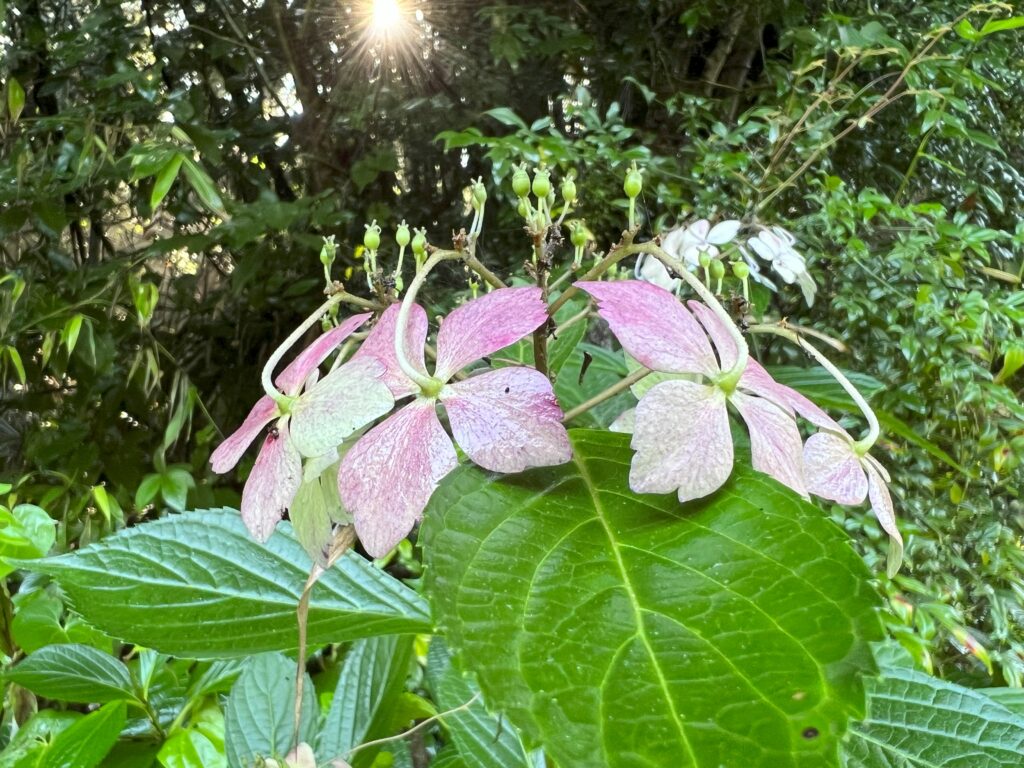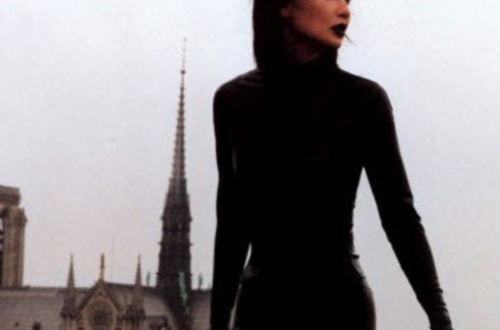Aditi Yadav
July 2023. Kyushu, Japan.
My heart trilled as hard as the summer cicadas, wildly with crude exuberance, as my thoughts outsped the shinkansen I was travelling on. Although, neither did a sound escape my lips nor did my limbs move to match my footloose thoughts. I sat glued to the seat, eagerly looking forward to the final destination, my vacuous eyes roving along the transitory scenery whooshing past the window—blue skies, fluffy clouds, umpteen shades of summer green, occasionally interrupted by man-made structures. I checked my phone for messages, and read the last one for nth time: “A-san, I will be there, waiting outside the station.” The joy wave I was riding on surged higher.

The shinkansen pulled close to Hakata station, and even before I knew, I was up on my feet, shuffling through the aisle. The train glided smoothly to a brief halt. Passengers had huddled close to the exit. As the door slid open, they stepped out one after another, bowing politely, partly to acknowledge the fleeting glances, and partly to apologize for the inconvenience caused. Hakata, being the biggest station in Kyushu’s capital Fukuoka, buzzed like a mini city (well, they do call it JR Hakata City). People, restaurants, souvenir shops, convenience stores—ah, the warm vibe of Japanese stations! But I had no time to stand and stare and marvel at it! Constantly on the move, I resisted all temptation, and changing escalators, found my way out of the enormous station.
I looked around for her, in the vast ocean of humanity-in-transit. My eyes scanned the faces they landed on, expecting a chubby, snow complexioned, five-feet lady with shoulder-length hair. Well, a lot of females matched the parameters, but I couldn’t see the face I was searching. I reached for my phone.
“Moshi moshi, sensei, doko? I am at the exit. Can’t find u.”
“What! A-san. I am outside. Why can’t you find me? Wait. I’ll send a picture.”
She hung up. A couple of seconds later a picture popped up on the chatting app. It didn’t seem anywhere close to my location. Another picture came in. I then spotted something saying ‘East Exit’ in the background. I turned around to see that I had made my way out through the west gate. I traced my steps back to the main station, and walked, and sprinted and walked again, until I reached the spot she had been waiting around. And there she was—my sensei—as bright as the summer sun. I leapt across and embraced her. I was meeting her after six years. One could waste a whole lifetime waiting for a miracle in quest of some elusive exhilarating beauty, or one could perceive each day as a miracle and experience life’s splendor in the most commonplace things—like a simple warm hug!
Sensei is in her seventies, and lives all by herself in the Kyushu countryside. Her hometown is blessed with a bucolic scenery that seems straight out of some Ghibli anime—clear azure skies with vagrant tufts of cotton candy clouds, verdant green rice fields, sylvan foliage rising, rolling and dipping along the contours of the hills. The idyllic Japanese countryside with the Cicada choir singing its paeans in the woodsy languorous summer air is a bewitching experience.

Her residence stood close to a local train station. From the window of the living room I could see arrays of hydrangea bushes flanking the railway track as the hillock towered up above. It was July and hydrangea blooms had lost their purple to wear the earthy-green farewell hue. The summer somnolence was interrupted from time to time by the cute clatter of little red-and-yellow carriages rolling down the track, like some amusing toy train. Sensei seemed keen on taking me to Shodo (Japanese calligraphy) class in the community center. She had already bought a calligraphy set. One day, after we returned from our visit to her friend’s place, she sat me down with washi paper, brush and inkpot. She dipped the brush in ink, then holding it upright like a samurai gripping his sword, she worked it round in a firm singular swirl—the fading brushstroke eager to close the circle.

After a brief moment of contemplation, a gentle smile beamed across her face as she confided in me, “A-san, I was hospitalized during the COVID time, and a hospital mate told me about this Zen symbol ‘Enso’. It is quite meaningful to understand the wabi-sabi of daily life. One single irreversible motion, just as in life there’s no turning back. You live always in motion—onward, forward. But never quite perfect—just as the circle doesn’t really get a final closure, reminding us of our limitations and transient existence. This is the first Shodo symbol I practised. Tomorrow we will go to the community center for Shodo class, and we can learn more from the Shodo sensei.” What Sensei and I learnt and enjoyed last summer deserves another book-length memoir. But my most valuable takeaway from the visit happened to be the philosophy of Wabi-Sabi 寂び.
There is no definitive equivalent in the English language to explain what Wabi-Sabi literally translates to. In fact, it encompasses a spectrum of emotions to help us appreciate each moment of our lives. Wabi 侘び is rooted in the feeling that the elements of nature evoke in solitude—vacuous brooding at the sky, random lost look at the horizon, the inexplicable connection with the woods, the wonder of the night sky. We’ve all been there, marveling at the grandeur of simple beauty of things that sustain life, accepting them as a force beyond human control, appreciating how nature is just perfect with all its imperfections. The bare nature in its rustic elements exudes grandeur. Embracing simplicity is the grandest beauty that one can usher into one’s life. The meaning hits deeper when you try extending the principle in daily human interactions. Like Carl Rogers put it, “People are just as wonderful as sunsets if you let them be. When I look at a sunset, I don’t find myself saying, ‘Soften the orange a bit on the right hand corner.’ I don’t try to control a sunset. I watch with awe as it unfolds.”
While Sabi 寂び captures the essence of time. As Heraclitus said, “No man ever steps in the same river twice. For it’s not the same river and he’s not the same man.” Impermanence is a fact of life and the transition of time manifests itself in ripening, rotting, tarnishing, decaying—so or so forth. Seasons change, people change, tectonic plates undergo upheavals, magma from volcanos create new islands, mass extinctions wipe out species, far out in the universe stars are born and destroyed—nothing stays the same. The more we understand the transient nature of life, the calmer we become, the closer we get to our individual essence.
Wabi-Sabi is built on the foundation of the three Buddhist principles of impermanence, suffering and emptiness. Richard Powell underscores how Wabi-Sabi is a guiding beacon to appreciate life with the realization that “nothing lasts, nothing is finished, and nothing is perfect.” Thus, one doesn’t have to chase the ideals of conformity to discover self-worth. One can walk at one’s individual pace and live a respectable life. One should taste all flavors life serves us in this journey and know that all of it shall pass.
In the Japanese way of life, Wabi-Sabi can be seen in various art forms and architectural features. The haikus in their brevity capture the passing moment captured in a seasonal kigo, but the moment evokes some deep contemplation in the reader. The Zengardens are characterized by an austere and rustic beauty placed in ruggedness. The tea ceremony in its essence aims to use the simple act of drinking tea to appreciate the present with a pure heart. Kintsugi is a unique art where broken cups are mended by filling joints and cracks with gold. It celebrates imperfection—conveying the idea that it is human to break at times, yet the resilience to pick oneself up makes one shine from the inside. The Hanami sessions are to just gaze at cherry blossoms in spring to observe the change of seasons and impermanence of life. The Japanese temple architecture is humble, devoid of ostentation and mindful of providing contemplative open spaces conducive to reflection and meditation.
The life we live is indeed a tale of how we ripe and rot as humans. However, the beauty we feel and observe around it depends on the philosophy that guides our heart and mind. To transform his philosophy into a living experience, Soetsu Yanagi, the folk-craft pioneer from Japan, started the mingei (crafts of the people)movement which is deeply rooted in the spirit of Wabi-Sabi. He observed how “mechanization is a kind of aesthetic strangulation,” closely resonating Marx’s theory of alienation from the self in the face of meteoric industrialization.
Mingei was also a mission to preserve the Japanese-ness of artforms against the rising Western influence. Yanagi wanted to usher in an art form that was free from frivolous vanity and wasteful luxury. The idea stood in contrast to the high-end aristocratic and delicate decorative works. Instead, he encouraged affordable craft-wares that had utilitarian value, things that were of practical use in daily life, and were made by hands and hearts of artisans. Such works represented the values of humility, sincerity, and honesty and were characterized by shibui (simple, subtle, unobtrusive earthly beauty).
There is enough beauty in the mundane if your heart has the eye for it. Training the heart’s eye to observe it requires deep understanding of Wabi-Sabi. In my mind, I am trudging uphill along with Sensei on a crisp sunny day, as Sensei stops for a while and asks, “A-san, see that sunlight filtering through the leaves, do you? We call it komorebi. Now, look at the ground—the beautiful pattern made of light and shade. Different komorebi, different pattern. Uniqueness of nature, wakarimasuka?” I wobble my head—the Indian way. She gives a hearty laugh and says, “Thank you for visiting me, my komorebi.”

Aditi Yadav is an amateur writer and translator from India. She is also a South Asia Speaks fellow (2023). Her works appear in Rain Taxi Review of Books, Scroll, The Punch Magazine, EKL Review, Usawa Literary Review, Gulmohur Quarterly, Borderless Journal and the Remnant Archive.
Photos by Aditi Yadav





